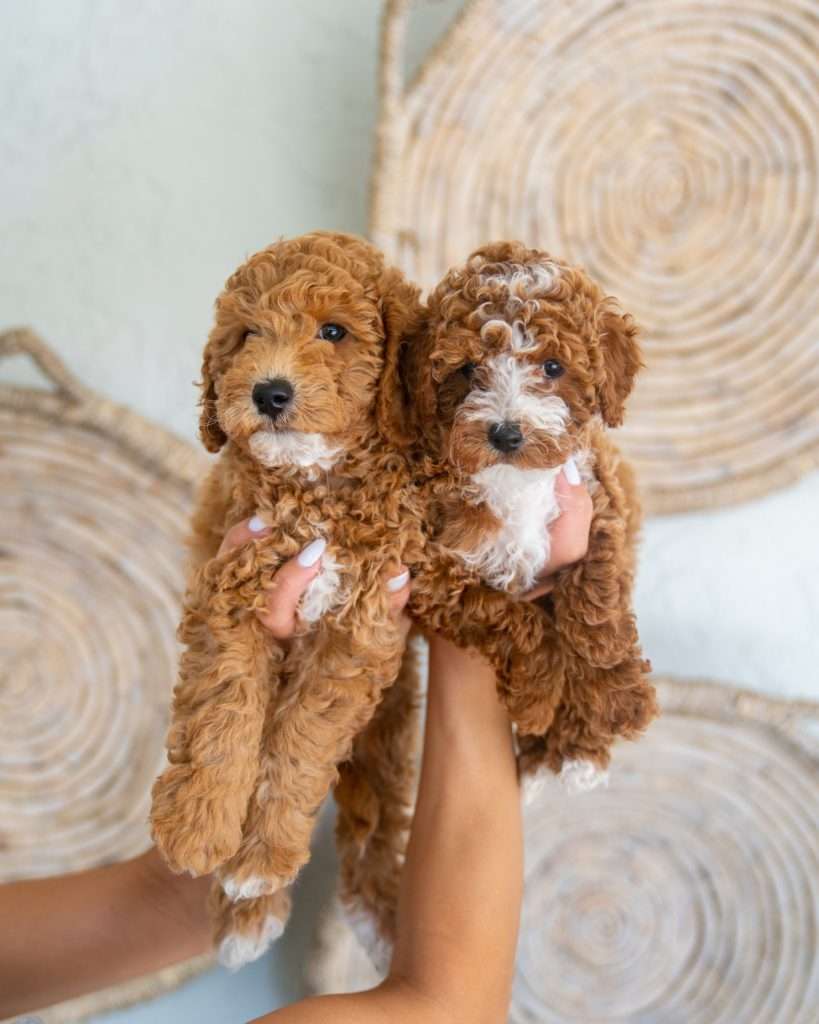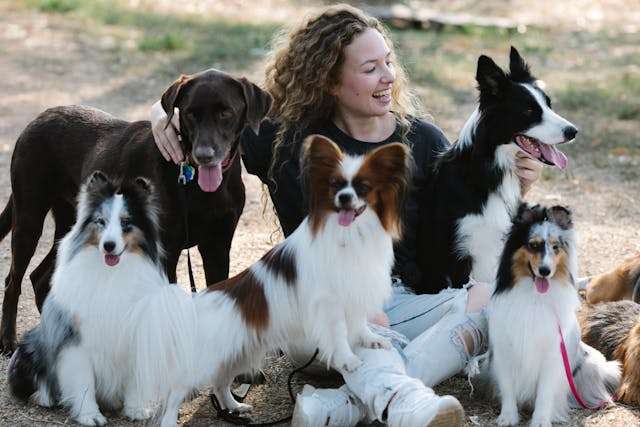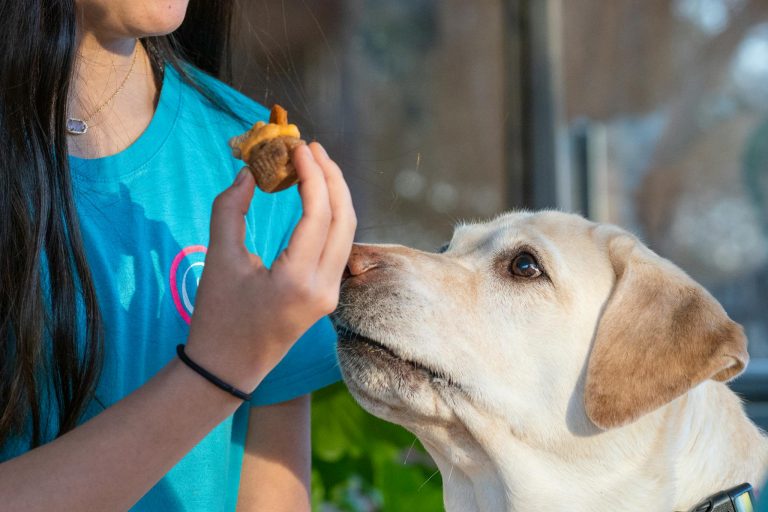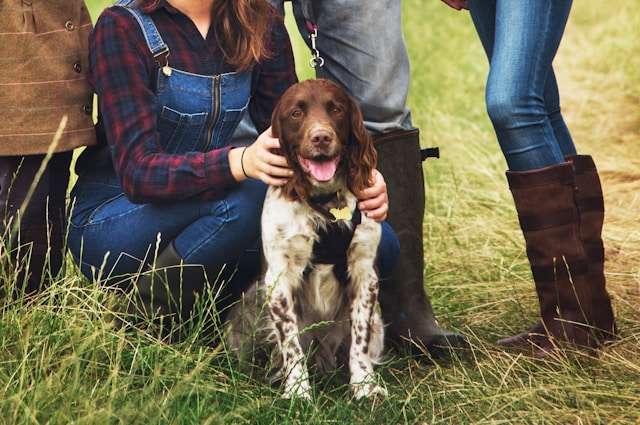Choosing The Right Goldendoodle for your family

Choosing the right Goldendoodle for your family can be exciting yet daunting. A crossbreed between a golden retriever and a Poodle, Goldendoodles have gained immense popularity due to their friendly nature and hypoallergenic qualities.
This comprehensive guide aims to provide you with essential insights into the various aspects of Goldendoodles, including their types and characteristics and how to select the right one for your family. Understanding these factors will help you decide whether to adopt or buy a Goldendoodle.
Introduction

Choosing the right Goldendoodle for your family can be exciting yet daunting. A crossbreed between a golden retriever and a Poodle, Goldendoodles have gained immense popularity due to their friendly nature and hypoallergenic qualities.
This comprehensive guide aims to provide you with essential insights into the various aspects of Goldendoodles, including their types and characteristics and how to select the right one for your family. Understanding these factors will help you decide whether to adopt or buy a Goldendoodle.
Table of Contents
Understanding Goldendoodles
What is a Goldendoodle?
A Goldendoodle is a hybrid dog breed that results from crossing a golden retriever with a Poodle. This blend combines the best traits of both parent breeds, resulting in a dog known for its intelligence, sociability, and low-shedding coat. Goldendoodles come in various sizes depending on the size of the Poodle used in the breeding process. Their friendly demeanor makes them excellent family pets, therapy dogs, and companions for individuals of all ages.
History and Origin
The Goldendoodle was first bred in the 1990s in North America and Australia. The intention behind creating this breed was to produce a guide dog suitable for allergy sufferers due to the Poodle’s hypoallergenic coat. Over the years, goldendoodles have gained popularity for their low-shedding fur, affectionate personality, and adaptability. They are now one of the most sought-after designer dog breeds.
Characteristics of Goldendoodles
Goldendoodles are known for their distinctive characteristics, which vary based on their generation and size. Generally, they are intelligent, eager to please, and social animals that thrive on companionship. Their coats can range from wavy to curly, contributing to their low-shedding quality. Goldendoodles are also highly trainable, making them suitable for various roles, including service and therapy dogs.
Moreover, their temperament is usually gentle and friendly. They are good with children and other pets, making them an ideal family dog. However, it’s essential to recognize that their behavior can be influenced by genetics, early socialization, and training.
Types of Goldendoodles
Standard Goldendoodles
Standard Goldendoodles are the most extensive variety, typically weighing between 50 to 90 pounds. They are often 20 inches tall or more at the shoulder. This size makes them suitable for families with ample space and an active lifestyle. They require regular exercise and mental stimulation to stay healthy and happy.
Standard Goldendoodles are known for their gentle temperament. They can adapt well to various living situations, whether a house with a yard or an apartment, as long as they receive enough exercise.
Miniature Goldendoodles

Miniature Goldendoodles are medium-sized varieties, usually weighing 25 to 50 pounds and standing about 15 to 20 inches tall. They are perfect for families who want a smaller dog that still possesses the characteristics of a Goldendoodle. Their size makes them more adaptable to smaller living spaces while still requiring regular walks and playtime.
Miniature Goldendoodles are also very friendly and thrive on interaction with their families. They often have a playful nature and are great for families with children.
Toy Goldendoodles

Toy Goldendoodles are the minor variety, typically weighing 10 to 25 pounds and standing under 15 inches tall. This breed is ideal for those who want a Goldendoodle in a compact size. Despite their diminutive stature, toy Goldendoodles are known for their prominent personalities and charm.
Supervising interactions between toy Goldendoodles and young children is essential to ensuring both parties’ safety. Although they require the same socialization and exercise as their larger counterparts, they can often get sufficient activity indoors.
Assessing Your Family’s Needs
Activity Level
Before choosing a Goldendoodle, consider your family’s activity level. Goldendoodles are energetic dogs that exercise regularly to maintain physical and mental health. A Goldendoodle can be an ideal companion if your family enjoys outdoor activities like hiking, running, or playing fetch. On the other hand, if your lifestyle is more sedentary, it’s crucial to select a Goldendoodle that matches that energy level, possibly opting for a smaller size or older dog.
Additionally, regular training and activities will help channel their energy positively, preventing boredom and destructive behaviors. Goldendoodles thrive on interaction, making them perfect for families who can dedicate time to play and exercise.
Allergies and Shedding
Families with allergies often choose Goldendoodles because of their low-shedding coats. However, it’s important to remember that no dog is entirely hypoallergenic. Poodles have curly hair that traps dander and hair, which can help reduce allergens in the home. If allergies concern your family, it’s advisable to spend time with Goldendoodles before committing to ensure they are suitable for you.
Regular grooming is essential to maintain their coat and minimize shedding. Depending on the specific type of Goldendoodle, the grooming needs may vary, with curly coats usually requiring more maintenance than wavy ones.
Choosing a Goldendoodle: Male vs. Female
Behavioral Differences
When selecting between a male or female Goldendoodle, there are some behavioral differences to consider. Males are often seen as more playful and boisterous, while females may exhibit a more nurturing and gentle demeanor. However, these traits can vary widely based on individual personalities and training.
It’s essential to observe the specific dog’s behavior. Regardless of sex, proper training and socialization from an early age are vital in shaping a well-adjusted adult dog.
Size and Growth
Another consideration is size. Generally, males tend to be larger than females in Goldendoodles, which can be an essential factor if you have space constraints or specific preferences for dog size. Understanding the expected growth patterns can help you prepare adequately for your new pet.
Both male and female Goldendoodles can make excellent family pets. The choice should align with your family’s lifestyle and preferences rather than simply relying on gender stereotypes.
Finding a Reputable Breeder
Researching Breeders
Finding a reputable breeder is crucial when adding a Goldendoodle to your family. Begin your search by looking for breeders who specialize in Goldendoodles and have a good reputation within the community. Online reviews, social media, and local breed clubs can provide valuable insights into breeders’ practices and the quality of their dogs.
Reputable breeders prioritize the health and temperament of their dogs and are transparent about their breeding practices. They should be willing to share information about the lineage of their puppies and provide health clearances for the parent dogs.
Questions to Ask Breeders
When you visit or contact breeders, have a list of questions ready. Inquire about the puppies’ health history, socialization practices, and what kind of training has been provided before adoption. Ask about the parent dogs’ temperament, health clearances, and living conditions. A good breeder will be more than happy to answer your questions and provide any necessary documentation.
Additionally, please request to see the puppies’ living conditions. This will give you insight into the care they receive and the environment they are raised in, which can significantly impact their behavior and health.
Health Testing and Guarantees
As health issues can be prevalent in hybrid breeds, it’s crucial to ensure that the breeder conducts health testing on their breeding dogs. Common problems in Goldendoodles include hip dysplasia, eye disorders, and certain skin conditions. A responsible breeder will provide health guarantees and be willing to explain what they do to prevent these issues from arising.
Health guarantees generally cover certain conditions and outline the breeder’s responsibilities if a genetic condition arises. This commitment reflects the breeder’s confidence in their breeding practices and the health of their puppies.
Adoption vs. Buying
Benefits of Adoption
Adopting a Goldendoodle from a rescue organization or shelter can be a rewarding experience. Many Goldendoodles in shelters need a loving home; adopting one can save a life. Additionally, adoption fees are often lower than buying from a breeder, and many shelters include spaying/neutering and initial vaccinations in their fees.
Adoption also allows you to provide a home for a dog that may already be trained or socialized, depending on their previous living situation. Many rescue organizations have dedicated Goldendoodle rescues, meaning you can find a breed-specific option when adopting.
Finding Goldendoodles in Shelters
Finding a Goldendoodle in a shelter may take effort, as they are often in high demand. Local animal shelters, breed-specific rescue groups, and online adoption platforms can be excellent resources for connecting with available dogs. Patience and persistence are vital; the right Goldendoodle will come with time.
Additionally, many organizations have foster programs that allow you to meet dogs in a home environment before committing. This helps you better understand the dog’s personality and needs.
Pros and Cons of Buying from Breeders
Buying from a breeder allows you to choose a puppy with a specific lineage and temperament, which can help ensure you get a dog that fits your family’s needs. However, providing the breeder with ethical breeding practices is crucial to avoid supporting puppy mills or irresponsible breeders. The initial cost may be higher, but investing in a healthy puppy from a reputable breeder can lead to a more fulfilling owner experience.
However, it’s essential to consider the implications of supporting breeding operations and the many dogs in shelters requiring homes. Weighing the pros and cons of both options will help guide your decision based on your family’s values and situation.
Preparing for Your Goldendoodle
Essential Supplies
Once you’ve decided to welcome a Goldendoodle into your home, it’s essential to prepare by gathering the necessary supplies. Key items include high-quality dog food that meets their nutritional needs, a comfortable bed, toys for mental stimulation, and grooming supplies like brushes and shampoos. Investing in a sturdy leash and collar is also crucial for safe outings.
Additionally, create a designated space for your Goldendoodle where they can feel secure and comfortable. This safe space will help them adjust to their new environment and provide a retreat when they need a break from activities.
Creating a Safe Space
Creating a safe space for your goldendoodle is critical to its adjustment. Secure cords, toxic plants, and small items that could be swallowed to ensure your home is pet-proof. Consider using baby gates to restrict access to certain areas of the house while your goldendoodle learns the lay of the land.
Establishing a routine is also beneficial for your Goldendoodle. Consistency in feeding, walks, and playtime will help them feel secure and understand what to expect in their new environment.
Introducing Your Goldendoodle to Your Family
When introducing your new Goldendoodle to the family, ensure the process is calm and relaxed. Allow family members to approach the dog one at a time and let the dog initiate interactions at their own pace. This approach will help prevent overwhelming the dog, fostering a more positive experience.
Supervise interactions between your Goldendoodle and children to promote safe and positive experiences. Teach children how to approach and interact with the dog gently, emphasizing respect for the dog’s space and comfort levels.
Conclusion
Final Thoughts on Choosing the Right Goldendoodle
Choosing the right Goldendoodle for your family involves carefully considering various factors, including understanding the breed, assessing your family’s needs, and finding a reputable source. Whether you opt for adoption or purchase from a breeder, being informed will help you make a decision that suits your lifestyle and meets the needs of your new pet.
The Goldendoodle is a versatile and loving breed that can bring joy and companionship into your home. Preparing adequately and making informed choices can ensure a positive experience with your new furry family member.
FAQs
1. Are Goldendoodles hypoallergenic?
While Goldendoodles are often considered hypoallergenic due to their Poodle lineage, no dog is completely free from allergens. Regular grooming helps minimize shedding and dander.
2. How much exercise do Goldendoodles need?
Goldendoodles require daily exercise, including walks, playtime, and mental stimulation. Standard Goldendoodles may need more exercise than their smaller counterparts.
3. What is the average lifespan of a Goldendoodle?
Goldendoodles typically have a lifespan of around 10 to 15 years, depending on size and overall health.
4. How often should I groom my Goldendoodle?
Grooming frequency depends on the coat type but generally ranges from every 4 to 8 weeks to prevent matting and maintain coat health.
5. Are Goldendoodles good with children?
Goldendoodles are known for their friendly and gentle nature, making them great companions for children when properly socialized.






